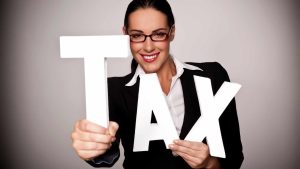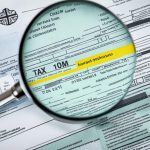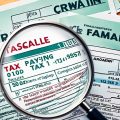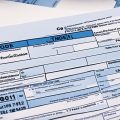Last Updated on: 22nd August 2024, 08:09 am
The 1265L tax code is an essential factor in the UK’s tax system. It determines an individual’s personal allowance and tax liabilities. Understanding the 1265L tax code for the 2024/25 tax year is crucial for accurately calculating taxes and ensuring compliance with HM Revenue and Customs (HMRC) regulations.
The 1265L tax code consists of a combination of numbers and the letter “L.” The numbers represent the tax-free income an individual is entitled to based on their personal allowance and untaxed income. The letter “L” signifies eligibility for the standard tax-free personal allowance.
This tax code is commonly used for individuals who have one job or pension and no untaxed income. It provides a baseline for tax calculations and enables employers and pension providers to deduct the correct amount of tax from an individual’s income.
To better understand the 1265L tax code and its implications for 2024/25, let’s explore its details, eligibility criteria, and the benefits it offers.
What is a 1265L Tax Code?

A 1265L tax code is a specific tax code used by HM Revenue and Customs (HMRC) in the UK to determine an individual’s personal allowance and tax liabilities. The code consists of numbers and letters that provide information on the amount of tax-free income an individual can earn in the 2024/25 tax year.
The numbers in the tax code are based on the individual’s personal allowance and income that has not been subject to tax, such as untaxed interest or part-time earnings. The letter “L” indicates that the individual is entitled to the standard tax-free personal allowance for 2024/25.
Personal Allowance for 2024/25:
| Tax Code | Personal Allowance | Tax Rate |
|---|---|---|
| 1265L | £12,650 | 20% |
This tax code is widely used by individuals who have one job or pension and no untaxed income. It serves as a key factor in calculating the correct amount of tax to deduct from an individual’s income.
Having a 1265L tax code means that you are eligible for the standard personal allowance provided by HMRC for 2024/25. By utilizing this tax code, individuals can earn a certain amount of income without having to pay tax, resulting in increased take-home pay and financial relief.
Employers and pension providers also benefit from using the 1265L tax code, as it simplifies the tax calculation process and ensures accurate deductions, minimizing the risk of under or overpayment of taxes.
If you have a 1265L tax code, it is important to regularly review and update your tax code to ensure it accurately reflects your current circumstances. This will help you better understand your tax obligations and make informed financial decisions.
How Does the 1265L Tax Code Work?

The 1265L tax code plays a crucial role in determining an individual’s tax liabilities and personal allowance for the 2024/25 tax year in the UK. Let’s delve into how this tax code works and what factors it takes into account.
The Numbers in the Tax Code
The numbers in the 1265L tax code represent an individual’s personal allowance, which is the amount of income they can earn before they start paying tax. This allowance is determined based on various factors such as their untaxed income and any benefits received from their employer, along with their personal circumstances.
The Letter “L”
The letter “L” in the tax code signifies that the individual is eligible for the standard tax-free personal allowance. This allowance grants individuals the freedom to earn a certain amount of income without paying any tax, providing financial relief and increasing take-home pay.
By utilizing the 1265L tax code, employers and pension providers can accurately calculate the amount of tax that needs to be deducted from an individual’s income, ensuring compliance with tax regulations and avoiding under or overpayment of taxes.
To understand the workings of the 1265L tax code, it’s essential to consider individual circumstances and any changes that may occur throughout the tax year. Regularly reviewing and updating your tax code will help ensure that it accurately reflects your current situation and entitlements.
Next, we’ll explore who is eligible for the 1265L tax code and explain why individuals may have this specific tax code.
Factors Considered in the 1265L Tax Code
| Factors | Details |
|---|---|
| Personal Allowance | Determines the amount of income an individual can earn tax-free. |
| Untaxed Income | Includes income that has not been subject to tax, such as untaxed interest or part-time earnings. |
| Company Benefits | Considers the value of any benefits received from an employer. |
Understanding how the 1265L tax code works is key to comprehending your tax obligations and making informed financial decisions throughout the tax year. By staying informed and in control of your tax code, you can navigate the UK tax system with confidence.
Who is Eligible for the 1265L Tax Code?

The 1265L tax code is commonly used in the UK for individuals who have one job or pension and no untaxed income. It serves as the default tax code for most people falling into this category. However, eligibility for the 1265L tax code can vary depending on individual circumstances.
Factors such as additional income, benefits, or special tax considerations may impact an individual’s tax code. It is crucial to review your tax code regularly to ensure it accurately reflects your personal circumstances and entitlement to the tax-free personal allowance for the 2024/25 tax year.
Eligibility for the 1265L tax code is determined based on various factors, including:
- The nature of your employment or pension
- Whether you have any other sources of income
- Any additional benefits or allowances you may be entitled to
- Special tax considerations that may apply to your circumstances
By understanding your eligibility for the 1265L tax code, you can ensure that you are receiving the correct tax allowances and deductions. Regularly reviewing and updating your tax code will help you stay up-to-date with any changes that may affect your tax liability.
| Tax Code | Eligibility Criteria |
|---|---|
| 1265L Tax Code | Individuals with one job or pension and no untaxed income |
| BR Tax Code | Individuals with multiple jobs or pensions and no personal allowance to use |
| DO Tax Code | Individuals who do not have a valid tax code or have not provided one to their employer |
| NT Tax Code | Individuals with income that is not taxable |
| K Tax Code | Individuals with income that is in excess of their personal allowance and subject to additional tax |
Understanding your tax code is essential for ensuring accurate deductions and compliance with UK tax laws. If you have any doubts about your eligibility for the 1265L tax code or any other tax-related queries, it is recommended to consult with a qualified tax professional or contact HM Revenue and Customs (HMRC) directly.
Why Do I Have a 1265L Tax Code?

If you find yourself with a 1265L tax code, it means that HMRC (HM Revenue and Customs) has determined that you are entitled to the standard tax-free personal allowance for the 2024/25 tax year. The “L” in the code signifies eligibility for the standard personal allowance.
HMRC calculates your tax code based on various factors, including your income, deductions, and any additional circumstances that may affect your tax liability. It is important to review your tax code regularly to ensure that it accurately reflects your current circumstances and entitlements.
By keeping your information up to date, you can avoid any potential discrepancies or errors in your tax code. This will help ensure that you are not paying more tax than necessary and that you are receiving the correct amount of tax relief.
If you have any questions or concerns about your tax code, it is recommended to contact HMRC directly. They will be able to provide you with more information and guidance regarding your specific situation.
| Why do I have 1265L tax code? | What is the l on a tax code? |
|---|---|
| A 1265L tax code means that you are entitled to the standard tax-free personal allowance for the current tax year. | The letter “L” in the tax code indicates eligibility for the standard personal allowance. |
Benefits of a 1265L Tax Code
A 1265L tax code comes with several advantages that can positively impact your financial situation. One of the main benefits is the tax-free personal allowance it provides.
With a 1265L tax code for the 2024/25 tax year, you can earn a specific amount of income without having to pay any tax. This can be a significant relief, allowing you to keep more of your hard-earned money.
By maximizing your tax-free allowance, you can increase your take-home pay and have more disposable income to allocate towards your financial goals or cover essential expenses.
Moreover, having a tax code with a standard personal allowance simplifies the tax calculation process for both employers and pension providers.
This simplification ensures that the correct amount of tax is deducted from your earnings, minimizing the risk of underpayment or overpayment of taxes.
Additionally, a standard tax code like 1265L allows for consistency and ease of administration, benefiting employers and pension providers by minimizing complexity in tax calculations.
In summary, the 1265L tax code provides a tax-free personal allowance, increases take-home pay, simplifies tax calculations, and reduces the risk of tax payment errors.
| Benefits of a 1265L Tax Code |
|---|
| Tax-free personal allowance |
| Increased take-home pay |
| Simplified tax calculations |
| Reduced risk of tax payment errors |
How to Apply 1265L Tax Code in the UK?

To apply for the 1265L tax code in the UK, you don’t actually need to submit an application. The tax code is automatically assigned by HM Revenue and Customs (HMRC) based on your personal circumstances and the information you provide.
If you believe that your tax code is incorrect or needs updating for the 2024/25 tax year, you can contact HMRC directly to discuss your situation. They will guide you through the process and ensure that your tax code reflects your current circumstances accurately. It’s important to provide HMRC with any relevant information, such as a change in job, income, or benefits, as this can affect your tax code.
Here are the steps to follow when applying or updating your 1265L tax code:
1. Contact HMRC: Reach out to HMRC through their helpline or online services to discuss your tax code issues.
2. Provide Information: Be prepared to provide details about your personal circumstances, including any changes in job, income, or benefits.
3. Discuss Your Situation: Speak with an HMRC representative who will guide you through the process and address any questions or concerns you may have.
4. Review and Verification: HMRC will review the information you provided and make the necessary adjustments to ensure your tax code is accurate.
5. Inform Your Employer: Once you receive your updated tax code, inform your employer or pension provider to ensure accurate tax deductions.
Steps to Apply/Update Tax Code
| Step | Action |
|---|---|
| Contact HMRC | Reach out to HM Revenue and Customs |
| Provide Information | Submit details about personal circumstances |
| Receive Updated Code | HMRC issues a revised tax code if necessary |
| Inform Employer | Update your employer or pension provider with the new tax code |
It’s important to note that HMRC regularly updates tax codes based on the latest regulations and guidelines. Therefore, even if you have the 1265L tax code, it’s always a good idea to review and update your tax information when necessary.
How Do I Know if My Tax Code is Wrong?

If you suspect that your tax code is incorrect, there are several signs to look for:
1. Unexpected Tax Bills: Receiving unexpected tax bills or notices from HMRC may indicate that your tax code needs to be reviewed.
2. Incorrect Pay Slips: If your pay slips show deductions that seem incorrect or inconsistent, it could be a sign that your tax code is wrong.
3. Changes in Circumstances: If you have experienced changes in your personal or financial circumstances, such as a new job or income adjustments, it’s important to review your tax code to ensure it’s up to date.
4. Notifying HMRC: If you believe your tax code is wrong, contact HMRC to review and update it as needed. Providing accurate and timely information will help ensure that your tax code reflects your current circumstances.
Signs of a Wrong Tax Code
| Sign | Action Required |
|---|---|
| Unexpected Tax Bills | Contact HMRC to review your tax code. |
| Incorrect Pay Slips | Verify with your employer or HMRC. |
| Changes in Circumstances | Update your tax code with HMRC. |
How to Check and Update Your 1265L Tax Code?

To ensure your tax affairs are accurate and up-to-date, it’s essential to check and update your 1265L tax code regularly. HMRC provides a user-friendly online tool called the tax code checker, which enables you to review the details of your tax code and understand what the numbers and letters signify.
By using this tool, you can gain insights into your tax-free income allowance, determine the amount of tax you’re liable to pay, and identify any necessary actions you may need to take.
If you suspect that your tax code is incorrect or requires updates, it’s recommended to contact HMRC directly. They have dedicated support staff who can assist you in discussing your situation and addressing any discrepancies or changes that need to be made.
It’s especially important to inform HMRC promptly about any alterations in your circumstances, such as changes in employment, income, or benefits, as these factors can have an impact on your tax code.
By providing HMRC with accurate and up-to-date information, they will review your case and ensure that your tax code is adjusted accordingly.
This ensures that you pay the correct amount of tax based on your current circumstances, avoiding potential underpayment or overpayment issues.
Step-by-Step Guide: How to Check and Update Your 1265L Tax Code
1. Visit the HMRC website and navigate to the tax code checker tool.
2. Enter your tax code in the specified field. In this case, input “1265L”.
3. Review the results provided by the tax code checker, which will provide you with a breakdown of what the numbers and letters in your tax code signify, the amount of tax you’re liable to pay, and any necessary actions to be taken.
4. If you notice any inaccuracies or discrepancies, contact HMRC directly and explain your situation to their support staff.
5. Keep HMRC informed of any changes in your circumstances, such as changes in employment, income, or benefits. This will enable them to update your tax code accordingly and ensure accurate tax calculations.
By following these steps and maintaining open communication with HMRC, you can stay on top of your tax affairs and ensure that your 1265L tax code accurately reflects your current circumstances.
Conclusion
The 1265L tax code is a key element of the UK tax system, essential for determining your tax-free personal allowance and managing your tax liabilities. For the 2024/25 tax year, this code reflects an individual’s eligibility for the standard personal allowance, which is set at £12,650. It encompasses various factors including your total income, any deductions, and additional personal circumstances.
Regularly reviewing and updating your tax code is crucial to ensure it aligns with your current financial situation and entitlements. Keeping your tax code accurate helps prevent over or underpayment of taxes, optimizing your financial well-being.
Understanding the 1265L tax code enables you to navigate the tax landscape with confidence, ensuring that you maximize your tax-free allowance and that the correct amount of tax is deducted from your income. Whether you’re an employee or a pensioner, this tax code is fundamental in managing your tax position effectively.
Stay informed about any updates to the tax code and consult with a tax professional if needed. This proactive approach will help you make the most of your earnings and ensure compliance with HMRC regulations. By maintaining an accurate tax code, you can better manage your finances and enjoy greater peace of mind.




















No Comments
Leave a comment Cancel